In 1202, Minamoto no Yoriie, the second shogun of the Kamakura period, donated the temple area and founded the Kenninji Temple. Eisai designed the temple, modeling it after Hyakjōzan in the Song Dynasty. In 1259, a Zen monk from the Song Dynasty, Rankei Doryu, founder of Kenchoji Temple, entered the temple, and it became a purely Zen Buddhist temple.
Eventually, the Muromachi Shogunate established the Kyoto Gozan (five mountains), based on the Chinese system, and Kenninji Temple flourished as the third-ranked temple under its protection.
During the Tensho period (1573-1592), Ankokuji Ekei had the Hojo and Butsuden moved to the new location. The pagoda was reconstructed and repaired under the protection of the Tokugawa Shogunate.
In the Meiji era (1868-1912), due to the government’s religious policy, the Kenninji School of the Rinzai sect became an independent sect, and Kenninji became the head temple of the School.
The separation of Buddhism and Shintoism led to the consolidation of sub-temples and the reduction of the temple grounds by nearly half. Currently the number of sub-temples is 15. They are Ryosoku-in Temple, Shoden Eigen-in Temple, Reigen-in Temple, Rokudo-chinnoji Temple, Kyushoin Temple, and others.
Architecture
Ankokuji Ekei moved Hojo building from Ankokuji Temple in Aki in 1599.


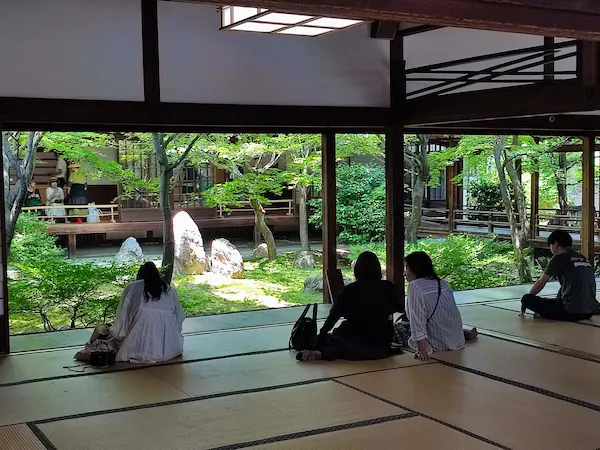
Later, Ankokuji Ekei was defeated in the Battle of Sekigahara, captured, and beheaded in Kyoto. In a corner of the garden, there is a head mound dedicated to Ankokuji Ekei. Though, few people notice the monument.
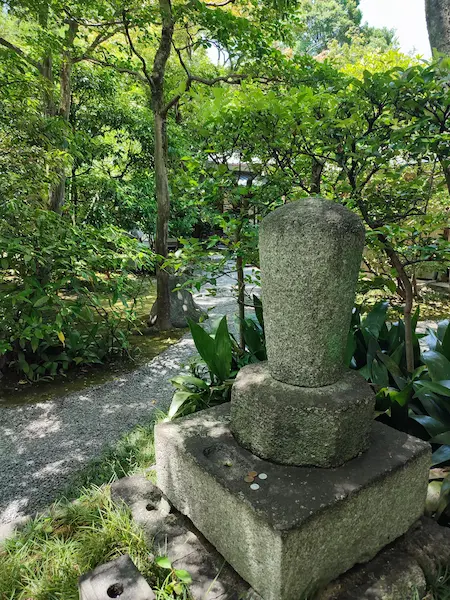
The Hatto was from 1765. Its ceiling was painted with twin dragons in 2002 to commemorate the 800th anniversary of the temple’s founding.
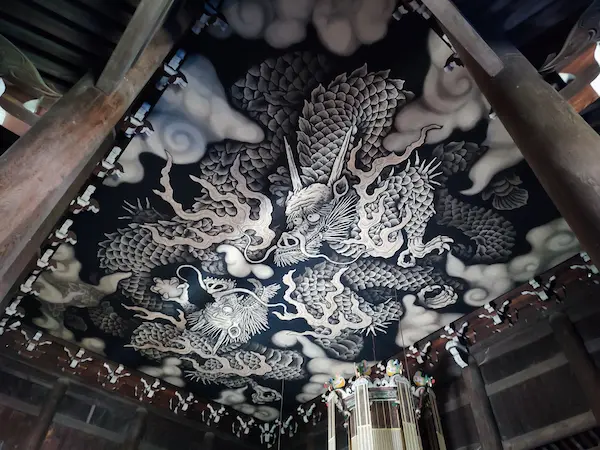
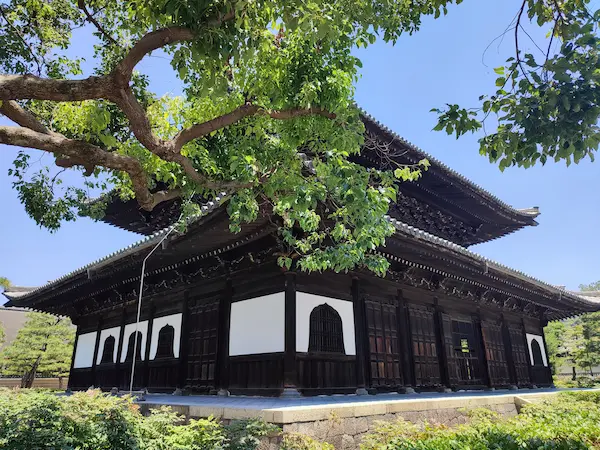
Gardens
Kenninji Temple is also famous for its beautiful hojo gardens. Among several gardens, the courtyard garden, Choontei, is the most picturesque of all the gardens. It is a Zen garden with a stone in the center, a stone for zazen meditation to the east, and foliage around it. You can enjoy it from any direction.



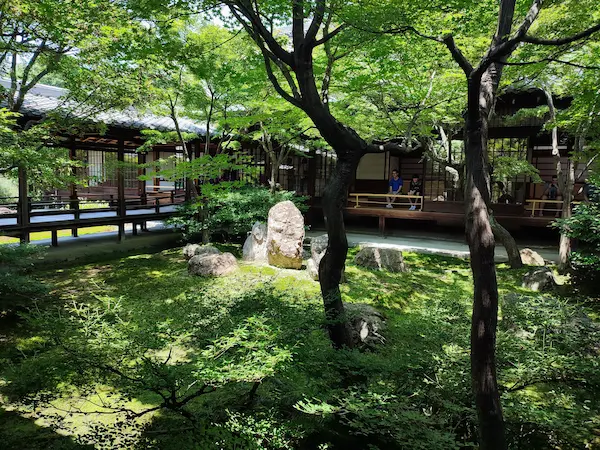


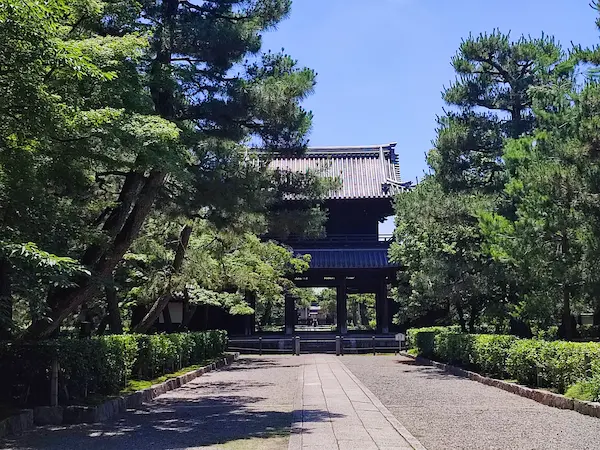
Model courses to visit Kenninji Temple
Kenninji Temple is one of the so-called Kyoto Gozan temples.
Nearby spots from Kenninji
Rokuharamitsuji Temple owns a famous statue of Kuya Shonin.
Related articles:
[…] is a temple of the Kenninji School of Rinzai Zen Buddhism and a sub-temple of Kenninji Temple. The principal image of the temple is the Amida Nyorai. It was built in the Kamakura period as […]
[…] Eigen-in is a sub-temple of Kenninji Temple, the head temple of the Rinzai sect of Buddhism. In the Kamakura period, when the temple was […]
[…] is one of the sub-temples located in the southeast of the Kenninji temple grounds. It was founded in the Ouei era (1394-1428) by Ryuzan Tokumi, a monk who was invited to […]
[…] Chinnoji Temple is one of the sub-temples of Kenninji Temple. The main deity is Yakushi Nyorai, but the temple is known for its statues of Ono-no Takamura and […]
[…] of the Rinzai sect in Kyoto. They include, from highest rank, Tenryuji Temple, Shokokuji Temple, Kenninji Temple, Tofukuji Temple, and Manjuji Temple, with Nanzenji Temple as the specially ranked […]
[…] Kenninji Temple, famous for its gardens and cultural assets, is nearby. Kenninji Temple is a World Heritage Site. […]
[…] Hokanji Temple is a temple of the Kenninji School of Rinzai Zen Buddhism. It is one of the oldest temples in Kyoto. And it is said to have […]
[…] Temple is one of the sub-temples of Kenninji Temple and is located in the precincts of Kenninji Temple. It is the family temple of the Okudaira clan, […]
[…] the temple’s foundation. It is the second oldest medieval-style structure in Japan after the Kenninji temple gate. You see a three-character inscription on the gate. It was handwritten by Ashikaga Yoshimitsu, […]
[…] sect in Kyoto. They include, from highest rank, Tenryuji Temple, Shokokuji Temple, Kenninji Temple, Tofukuji Temple, and Manjuji Temple, with Nanzenji Temple as the specially ranked […]